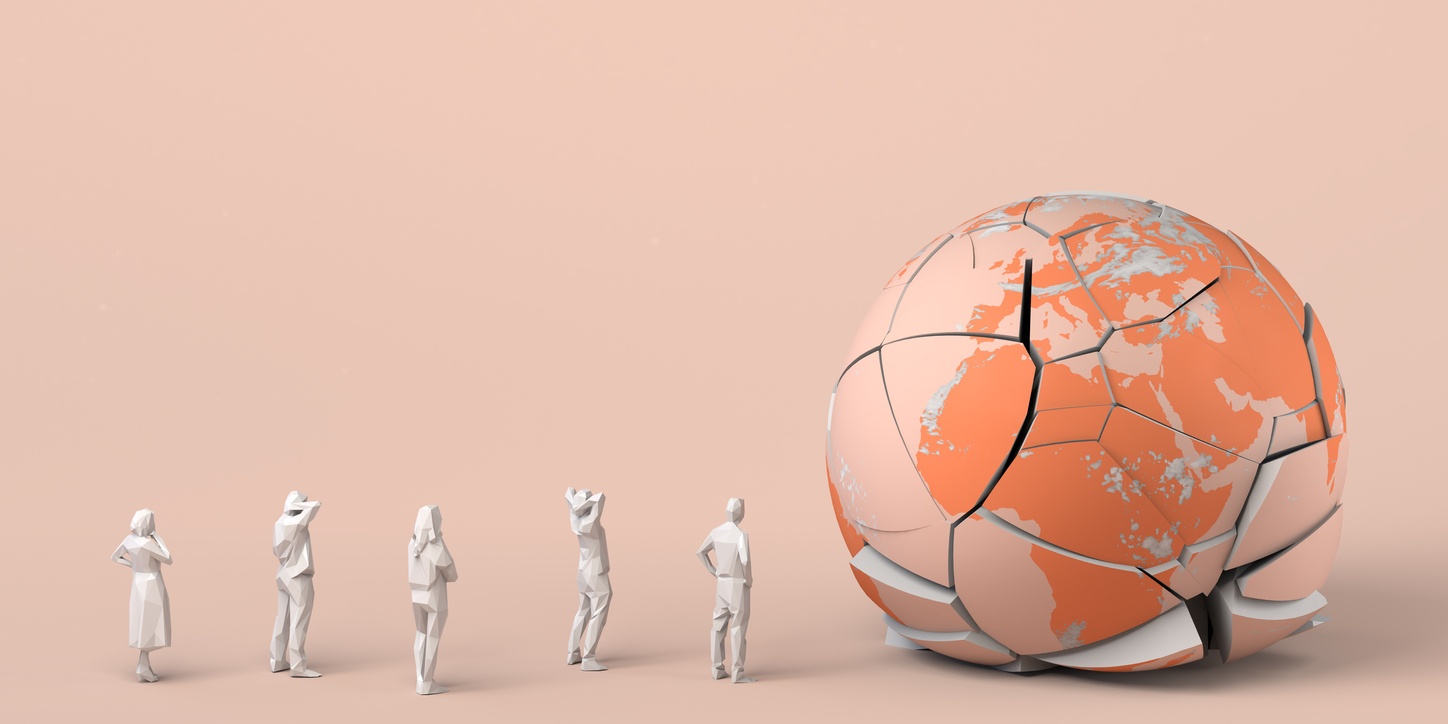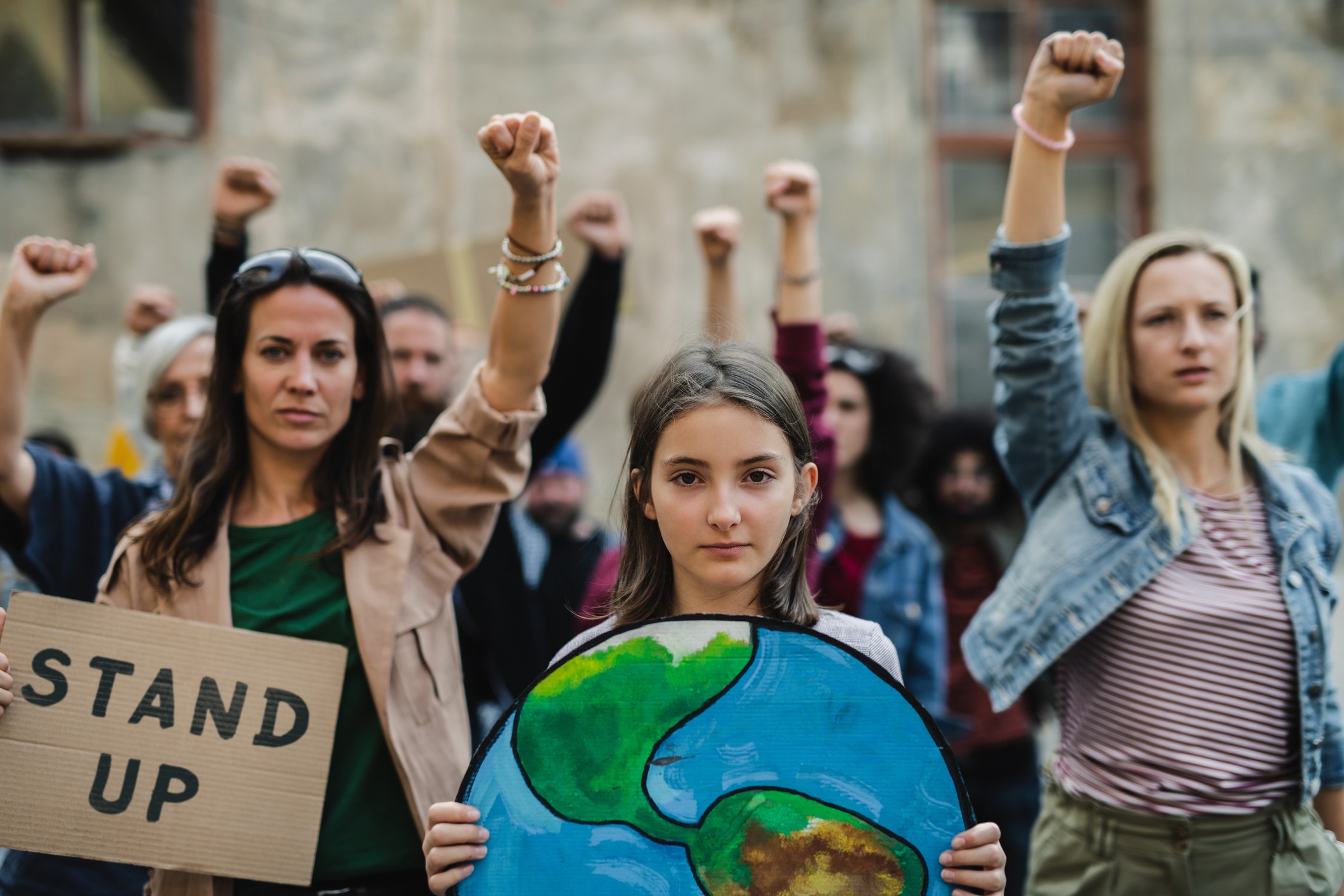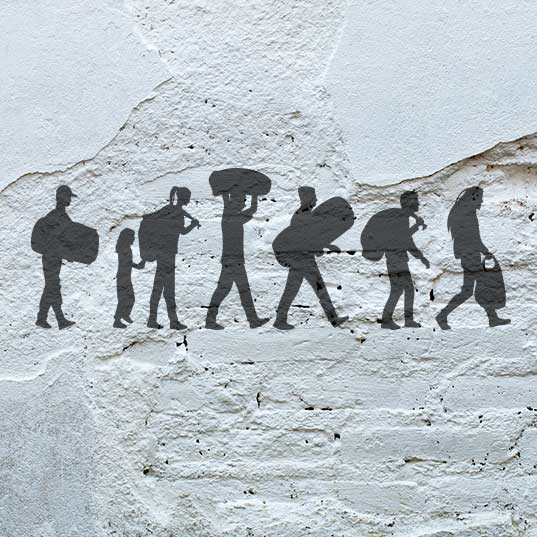The IPPC answers the question: What will the world look like in 2100?
The latest report from the Intergovernmental Panel on Climate Change (IPCC) warns what global warming could do to the planet by the year 2100
It’s not easy to answer the question in our headline. We don’t have a crystal ball to show us exactly what Earth will look like in the coming decades. There are also many variables with an influence on the different scenarios. Indeed, the latest IPCC report on climate change looks at several possibilities.
It all depends on how many degrees we allow the global temperature to rise. One thing’s sure: if we don’t reduce greenhouse gas emissions immediately and take the necessary measures, life on our planet will become very complicated.
The worst scenario according to the IPCC report
 Let's assume it’s 2100 and we’ve done nothing to curb global warming. Earth would be very different from how we know it today.
Let's assume it’s 2100 and we’ve done nothing to curb global warming. Earth would be very different from how we know it today.
For starters, in a high-emission scenario, the global temperature would rise by 3.3 to 5.7ºC by the end of this century, according to estimates in the IPCC report.
The United Nations warns that, by continuing along this path, our very survival would be at risk, since society would struggle to get by in such a warm world:
🌡🗓 Heatwaves will be 39 times more common than they were in the 19th Century.
On average, the global temperature will be over 40°C around 7 days a year.
🌪 Extreme weather events such as cyclones, hurricanes and droughts would no longer be seen as "extreme", because of how often they would happen.
Some of these events, which previously occurred once every 100 years, might occur every year by the end of the century, the report says.
💦 Sea levels could increase by up to 1.8 meters if we don’t take measures to limit greenhouse gas emissions.
🌧 Another predictable change as a result of global warming will be the intensification of the global water cycle, including the frequency of torrential rains and droughts.
☔ In terms of rain, average annual rainfall would be expected to increase by 6.8% by 2100, compared with the period 1995–2014.
🏜 But there wouldn’t be equal rainfall across the globe. In Mediterranean countries, for example, there’d be such a lack of rain they’d become desert areas. Indeed, it’s predicted there could be 22% less rainfall around the Med.
🧊 In Septembers, there’d be 77% less ice in the Arctic than in the pre-industrial era. The Arctic Ocean would be 4 to 5 degrees Celsius warmer by 2060, although in the worst of scenarios the increase could be as much as 8°C.
🌊 Over half of oceans could already be affected by climate change. It could well be 80% before 2100. Land and ocean sinks that absorbed 59% of emissions between 1850 and 2019, would only be able to retain 38 % by 2100. This will also lead to more marine heatwaves, greater ocean acidification, and reduced oxygen levels.
"In a high-emission scenario, the global temperature would rise by 3.3 to 5.7ºC by the end of the century"
What will the planet look like in 2100 if we continue to emit the same?
The reality is that, just a 4°C increase in temperature will unload a cataclysm of catastrophes upon us. With only 2°C of global warming, experts say the phenomena we’re experiencing today will become much greater and more common, and that the Earth will arrive at critical tolerance levels in terms of planetary health and the health of its inhabitants.
Indeed, according to the report, if the current rate of greenhouse gas emissions continues, global temperature will increase by 2.7 degrees by the end of the century, compared to the average figure in the pre-industrial era.
What consequences will there be as a result of this temperature rise?
🥵 There’ll be 14 times as many heatwaves - and they’ll start occurring in places which have never experienced them before. In the Mediterranean, the temperature rise will be 2 degrees, rather than 4, but the number of extreme heat days might reach 17 a year.
🌡🗓 Globally, there’ll be an average of 3 to 5 days in which temperatures will go over 40°C.
💦 We’ll get a 60 centimeter rise in sea levels.
🌪 Extreme weather events will multiply and become more intense as temperatures increase.
🏜 Droughts will become common in most of Africa, Australia, southern Europe, southern and mid US, Central America and the Caribbean, and parts of South America.
🌽 It’s estimated the price of cereals could rise by 29%, putting 183 million people at further risk of hunger.
❌ Coral reefs would completely disappear in a world living with such temperatures.
"If the current rate of emissions is maintained, the global temperature will increase by 2.7 degrees"
We don’t need to look as far as 2100 to realize what consequences will befall us if we keep emitting at current levels. What would the world look like in 2050? In less than three decades’ time? This infographic shows the scenario we’ll be living:

The goal is the Paris Agreement
So, what would happen if we managed to become carbon neutral? The IPCC’s forecasts show that, even if we manage to reduce emissions as much as possible, in the best-case scenario, the temperature in 2100 could rise by 1.8ºC. A figure that is still very worrying.
Sea levels will inevitably continue to rise by between 28 and 55 cm by the end of the century, compared to their current levels, even if we manage to achieve zero net emissions. The same is true with regard to changes to the water cycle and the increase in hot and cold extremes.
"In the best-case scenario, the temperature in 2100 could rise by 1.8ºC"
Today, the average temperature rise of the planet is already around 1.1 degrees compared to pre-industrial levels. This rise is already causing irreversible changes in the Earth's climate in all regions. Temperatures of up to 50°C in Canada, the unprecedented floods in Germany and Belgium and the fires that ravaged Greece and Turkey last summer, are a stark reminder that no country is safe from the impacts of global warming.
"Humanity needs to replace fossil fuels with renewable energies to mitigate the effects of global warming as much as possible"
That is why it is more important than ever to achieve carbon neutrality to prevent global warming from exceeding 1.5°C and ultimately meet the provisions set out in the 2015 Paris Agreement.
The Paris Agreement is home to the commitment made by 196 parties to make all the efforts necessary to ensure that the rise in global temperature does not exceed 2°C - but it also encourages all those concerned to strive to limit that rise to 1.5°C.
Indeed, one of the most important conclusions in the latest IPCC report on climate change is that each degree Celsius counts - and even if the global temperature rises by just a few tenths, the consequences could be devastating.
We must be more ambitious, but we still have a chance to put a brake on climate change while adapting to its worst consequences. Humanity needs to reverse its production of emissions dramatically and replace fossil fuels with renewable energies to mitigate the effects of global warming as much as possible. It is also essential to go a step further, moving from sustainability toward regenerative sustainability, to heal the planet's environmental wounds. To cut to the chase, we need to swap our model for a sustainable one to ensure a future for all of us.
SOURCES:
https://news.un.org/en/story/2021/08/1097362
https://www.ipcc.ch/report/ar6/wg1/downloads/report/IPCC_AR6_WGI_SPM.pdf
https://www.sostenibilidad.com/cambio-climatico/derribando-mitos-cambio-climatico/







